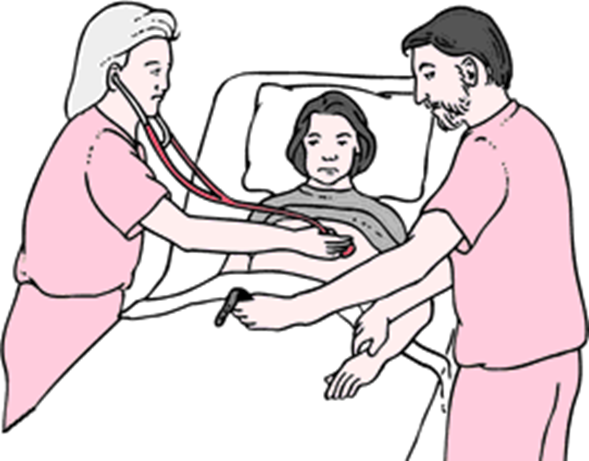A nurse is planning care for a client who has long-term liver cirrhosis and a new diagnosis of abdominal ascites. Which of the following interventions should the nurse include in the plan of care to prevent complications?
Administer furosemide.
Weigh the client weekly.
Offer the client a high-sodium diet.
Administer heparin.
The Correct Answer is B
Answer: A. Administer furosemide.
Rationales
A. Administer furosemide.
Furosemide, a loop diuretic, helps reduce fluid overload by promoting urinary excretion of sodium and water. In a client with cirrhosis and ascites, it decreases abdominal distention, eases breathing by reducing pressure on the diaphragm, and prevents complications related to severe fluid accumulation.
B. Weigh the client weekly.
Weekly weights would not provide sufficient monitoring for a client with ascites, since fluid retention can change rapidly within hours or days. Daily weights are necessary to detect subtle increases in fluid status and to evaluate the effectiveness of treatment.
C. Offer the client a high-sodium diet.
A high-sodium diet would worsen fluid retention and ascites, as sodium promotes water retention. Instead, a low-sodium diet is indicated to limit further fluid buildup in the peritoneal cavity.
D. Administer heparin.
Heparin is not a standard intervention for cirrhosis with ascites. Because the diseased liver produces fewer clotting factors, clients are already at risk for bleeding, and anticoagulant therapy would heighten this risk without addressing the underlying problem of fluid accumulation.
Nursing Test Bank
Naxlex Comprehensive Predictor Exams
Related Questions
Correct Answer is B
Explanation
Choice A rationale:
A capillary refill of less than 1 second is a normal finding and indicates adequate peripheral perfusion. It is not a cause for concern in this postoperative client.
Choice B rationale:

The presence of a pulse deficit should be reported to the provider because it suggests a discrepancy between the apical and radial pulses, indicating potential cardiovascular compromise or inadequate arterial perfusion.
Choice C rationale:
A systolic blood pressure 10 points lower than before surgery can be a normal response to anesthesia or surgery and may not necessarily require immediate reporting unless accompanied by other concerning symptoms or vital sign abnormalities.
Choice D rationale:
Pulse oximetry at 96% is within the normal range for oxygen saturation and does not warrant immediate reporting. However, if the client is experiencing respiratory distress or other concerning symptoms, it should be addressed promptly.
Correct Answer is D
Explanation
Choice A rationale:
A PaO2 value of 86 mm Hg is within the normal range (80-100 mm Hg) and does not indicate respiratory acidosis. PaO2 measures the partial pressure of oxygen in arterial blood.
Choice B rationale:
A pH of 7.4 is within the normal range (7.35-7.45) and does not indicate respiratory acidosis. The pH reflects the acidity or alkalinity of the blood.
Choice C rationale:
An HCO3 (bicarbonate) level of 16 mEq/L is within the normal range (22-28 mEq/L) and does not indicate respiratory acidosis. HCO3 is a measure of the metabolic component of the body's acid-base balance.
Choice D rationale:
This is the correct choice. A PaCO2 value of 58 mm Hg is elevated and indicates respiratory acidosis. PaCO2 measures the partial pressure of carbon dioxide in arterial blood, and an elevated value suggests the presence of excess carbon dioxide, leading to acidosis.
Whether you are a student looking to ace your exams or a practicing nurse seeking to enhance your expertise , our nursing education contents will empower you with the confidence and competence to make a difference in the lives of patients and become a respected leader in the healthcare field.
Visit Naxlex, invest in your future and unlock endless possibilities with our unparalleled nursing education contents today
Report Wrong Answer on the Current Question
Do you disagree with the answer? If yes, what is your expected answer? Explain.
Kindly be descriptive with the issue you are facing.
